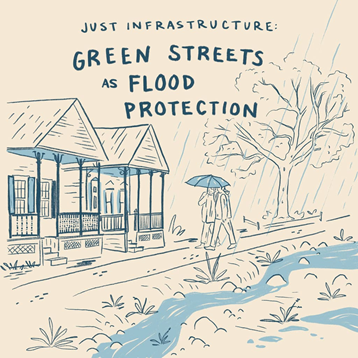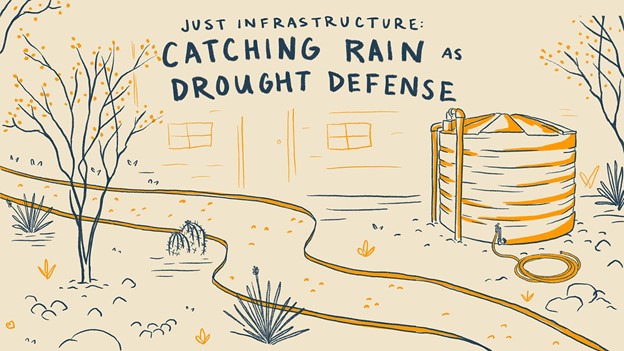By Dr. C. Tom Williams, PhD
Real Time Experience with Putting the LID on Runoff – Where to put the runoff?
As part of a settlement regarding the pollution of Santa Monica Bay, the County and City of Los Angeles developed the concept of collecting and reducing surface runoff flows – totals and flows (cu-ft per hour) of rainwater to streets then to inlets and storm drains of the City going to the LA River and Ballona Creek thence to Santa Monica and San Pedro Bays. The City then expanded the program to the entire City and named it: Los Angeles City, Low Impact Development, LID.
As an environmentalist approach with those LID efforts, I decided to try it for my houses (two, 1921-1925) in El Sereno District of NELA Community Plan Area, 6 miles NE of City Hall. I added an onsite and neighborly irrigation system and storage for California native chaparral trees and bushes that I have been promoting for the last 30 years. So I developed a collection, storage, and irrigation system for the total rainfall on two houses and a garage with a total roof area of 2200 sqft which would fully comply with and exceed the LID requirements of the City, if I were to rebuild my houses.

Storm Water Home Capture (Use onsite what would go to Storm Drains and Sea)
I have pervious pavers for parking areas and most walking areas. Unfortunately there is still a 30+ x 10ft wide driveway on a steep slope which partially drains to the street.
Our two rooftops are about 1000 sq ft each with a garage of 270 sq ft (total capture area 2270 sq ft). The garage drains directly to a distributor in the greenery immediately below or south of the garage, no storage needed. The house rooftops drain to gutters, gutters to down-spouts to tanks, and the tanks flow to gravity irrigation hoses/1in plastic pipes with perforations circling under canopies of trees and large bushes (Ceanothus and elderberry). We also have portable low-flow pumps for specific irrigations. We have added native chaparral shrubs and small trees (chaparral-like) for hose irrigation and kept a remnant grass lawn (<360 sqft) for periodic irrigation (to be replaced in 2024).
We planted more native ground cover, including prostrate coyote bush for covering/climbing on vertical neighbor’s chain-link fences which is also irrigated with LID waters. We compost everything and keep our compost damp and leach into soil near the drip zones of all trees; we also collect some kitchen gray water which goes into the irrigation works.
All vegetation on the next to 2 lots (13,300 sq ft) is irrigated only by rains and runoff collection but with limits only on north/east (street) sides of houses and garage. We are expanding into an adjacent 14-acre parcel which may eventually become a “Project”.
I have found more than five free tanks locally (500+gal) and use up to six “trash bins” with wheels supplied to the two homes by the City of Los Angeles (480+gal) to provide a combined holding capacity of 1,000 gal. Although it sounds like a lot, they are only sufficient short-term (12-24hr) holding capacity for storms over the last ten years, including some in 2023-24, but sometimes they require overflows or pump-outs on the same day (in less than 24 hr/day). With global warming and atmospheric rivers, I need more storage for 2024 and beyond.

So for me, runoff from my parcels and houses and one separate garage can be controlled with 2000+gallon containers, and we comply with the City’s LID requirements for a 3/4in rainfall with 1-2 rain barrels (total 110 gal) requirements. I plan to redo my driveway to divert runoff into existing native plants and replace the 1920s hedge with California native shrubs. (I have lots of Salvia).
However, the City’s/County’s LID requirements are totally inadequate for rainfall events of 2024 and beyond in regards to containment capacity and irrigation/recharge requirements. LA City’s LID is inadequate (two 55 gal drums for downspouts of 1000-2000 sq ft residences) nor effective, two barrels for four downspouts.
One of the great benefits from installing and observing my system is that working with my own storm water discharge has me looking around for more water. I have become more ambitious and am trying to incorporate a greywater system into the LID system (that is another article). If you need help with your DIY stormwater capture project just send an address and I will happily help access satellite images and give you a start-up LID plan.
Dr. Tom as he is affectionately known is a long time member of the Angeles Chapter Water Committee, a member of the Sierra Club CA Water Committee and a Life member of Sierra Club. You can reach him at: ctwilliams2012@yahoo.com

